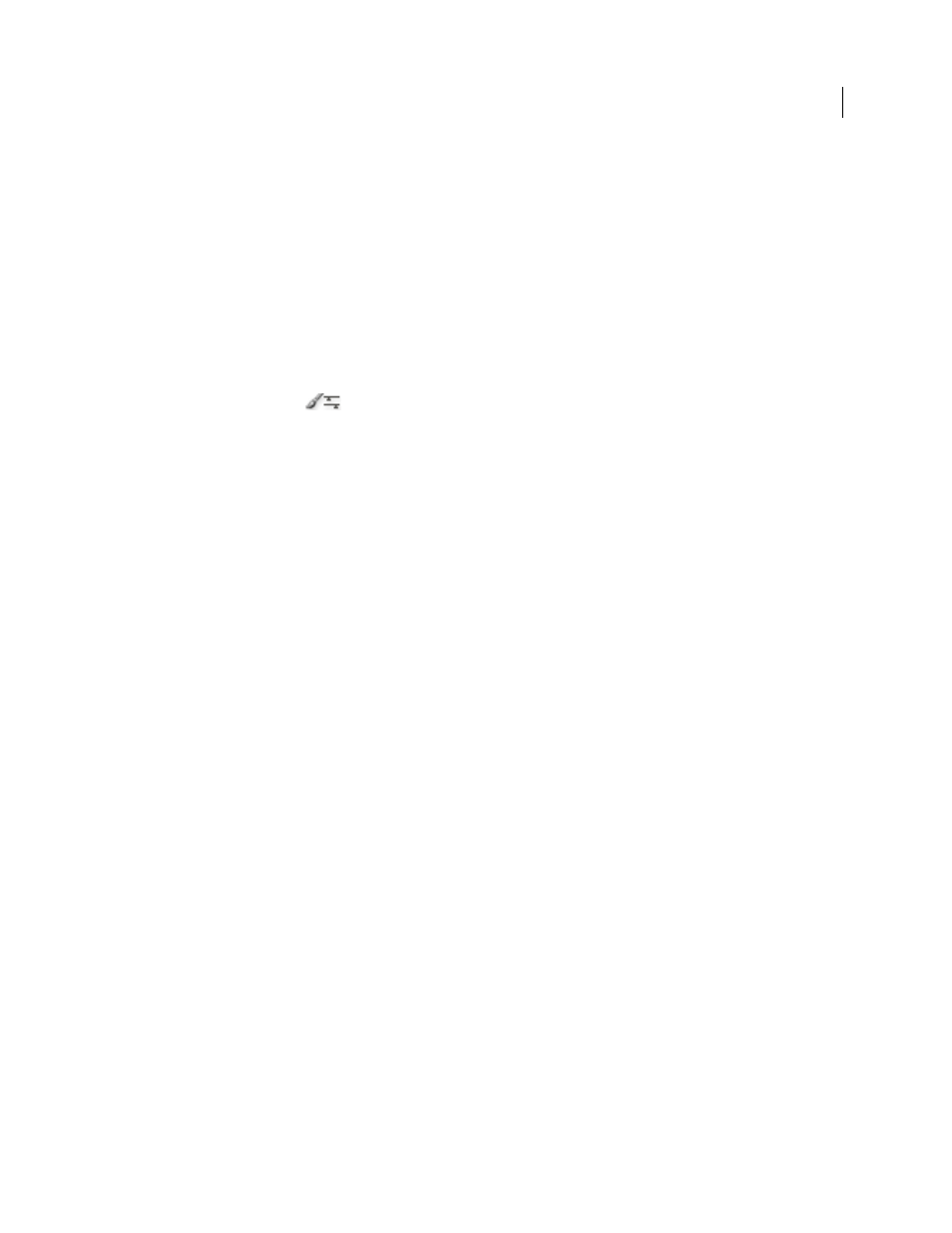Modify a brush, Brush options, Calligraphic brush options – Adobe Illustrator CS4 User Manual
Page 180

173
USING ADOBE ILLUSTRATOR CS4
Painting
4
In the Brush Options dialog box, enter a name for the brush, set brush options, and click
OK.
Modify a brush
•
To change the options for a brush, double-click the brush in the Brushes panel. Set the brush options and click
OK.
If the current document contains brushed paths that use the modified brush, a message appears. Click Apply To
Strokes to change pre-existing strokes. Click Leave Strokes to leave pre-existing strokes unchanged, and apply the
modified brush to new strokes only.
•
To change the artwork used by a scatter, art, or pattern brush, drag the brush into your artwork and make the
changes you want. Then Alt-drag (Windows) or Option-drag (Mac
OS) the modified brush onto the original brush
in the Brushes panel.
•
To modify a brushed path without updating the corresponding brush, select the path and click the Options Of
Selected Object button
in the Brushes panel.
Brush options
You can specify different options for the different types of brushes. To change the options for a brush, double-click the
brush in the Brushes panel.
Scatter, Art, and Pattern brushes all have identical options for colorization.
Calligraphic brush options
Angle
Determines the angle of rotation for the brush. Drag the arrowhead in the preview, or enter a value in the Angle box.
Roundness
Determines roundness of the brush. Drag a black dot in the preview away from or toward the center,
or enter a value in the Roundness box. The higher the value, the greater the roundness.
Diameter
Determines the diameter of the brush. Use the Diameter slider, or enter a value in the Diameter box.
The pop-up list to the right of each option lets you control variations in the shape of the brush. Select one of the
following options:
•
Fixed
Creates a brush with a fixed angle, roundness, or diameter.
•
Random
Creates a brush with random variations in angle, roundness, or diameter. Enter a value in the Variation
box to specify the range within which the brush characteristic can vary. For example, when the Diameter value is 15
and the Variation value is 5, the diameter can be 10, or 20, or any value in between.
•
Pressure
Creates a brush that varies in angle, roundness, or diameter based on the pressure of a drawing stylus.
This option is most useful when used with Diameter. It is available only if you have a graphics tablet. Enter a value in
the Variation box to specify how much more or less than the original value the brush characteristic will vary.
For example, when the Roundness value is 75% and the Variation value is 25%, the lightest stroke is 50% and the
heaviest stroke is 100%. The lighter the pressure, the more angular the brush
stroke.
•
Stylus Wheel
Creates a brush that varies in diameter based on manipulation of the stylus wheel. This option is
intended to be used with an airbrush pen that has a stylus wheel on its barrel and with a graphics tablet that can detect
that pen.
•
Tilt
Creates a brush that varies in angle, roundness, or diameter based on the tilt of a drawing stylus. This option is
most useful when used with Roundness. It is available only if you have a graphics tablet that can detect how close to
vertical the pen is.
•
Bearing
Creates a brush that varies in angle, roundness, or diameter based on the bearing of the pen. This option
is most useful when used to control the angle of calligraphic brushes, especially when you’re using the brush like a
paintbrush. It is available only if you have a graphics tablet that can detect the direction in which the pen is tilted.
